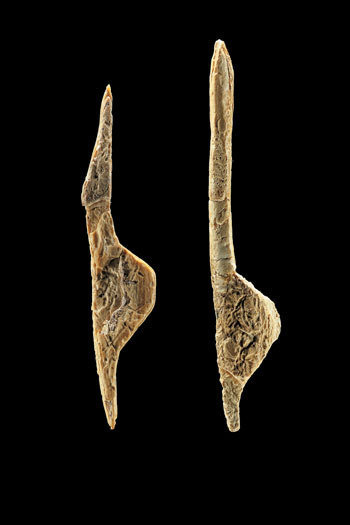Art in the Age of Altamira
dal 2/7/2013 al 28/9/2013
Segnalato da
2/7/2013
Art in the Age of Altamira
Fundacion Marcelino Botin, Santander
Using sculptures and drawings of humans and animals from the period 22,000 to 12,000 years ago alongside modern works by Miro', Matisse, Hecht and Pasmore, as well as a film installation reflecting the synesthetic experience of creating art in artificial light underground, the exhibition reveals that the concepts and techniques used have changed little through time.

curator: Jill Cook, Deputy Keeper of the Department of Prehistory and Europe, British Museum
Using sculptures and drawings of humans and animals from the period 22,000 to 12,000 years ago alongside modern works by Miró, Matisse, Hecht and Pasmore, as well as a film installation reflecting the synesthetic experience of creating art in artificial light underground, the exhibition reveals that the concepts and techniques used have changed little through time. All art is the product of the modern brain and the ability to make art was and is crucial to human survival.
When fully modern people arrived in Europe out of Africa where they had evolved and begun to use pigments, create patterns and make personal ornaments, they began to make the first figurative art about 40,000 years ago.
Although capable of expressing their ideas through complex language this alone was not sufficient to meet the demands of harsh environmental conditions in which they were greatly outnumbered by animals. Fixing ideas in images that people could share provided opportunities for bonding and socialising that enabled communities to collaborate and endure.
The age of Altamira was a period of renaissance in Ice Age art when new techniques, different styles and distinctive repertoire of decorative and figurative art emerged. In the exhibition these are represented by works from nine museums in Spain, Britain, France and Germany that show the skill and accomplishment that allows most of them to be described as masterpieces.
It includes the extraordinary 13,000 year old sculpture of two swimming reindeer created from mammoth ivory from France curated by the British Museum; the beautiful sculpted ibex head from Tito Bustillo on loan from the Museo Arqueológico de Asturias, Oviedo, and the unique 16,000 year old sculpture of a wolverine from Jarama II one of the treasures in the collection of the Museo Arqueológico Nacional, Madrid.
Realism, imagination and abstraction are revealed in drawings on bone and stone, as well as distinctive ivory sculptures of women on loan from museums in Halle and Weimar in Germany.
These exceptional works are coming together for the first time with modern works that help to break down the time barrier and provide ways of seeing the similarity of concepts and techniques that have not changed except in their cultural context.
Miró visited Altamira in 1957 and, as a result, often painted his large later works off easel using earth colours. In prints from a series called Grans rupestres (Cave art) created in 1977 and produced in 1979, he presents a metaphor for the infancy of art that opens the exhibition.
The exhibition develops themes explored in highly successful exhibition Ice Age art: arrival of the modern mind shown at the British Museum earlier this year and incorporates Spanish and French works not seen there. It also celebrates the Botín family connection with the discovery of Altamira in 1879 when the authenticity of the great paintings was doubted because the techniques used should similarities to those of the contemporary impressionists such as Monet. The antiquity of the images has not been in doubt since 1902 but only now are they beginning to take their place in the history of art rather than just archaeological objects.
Image: Figuras de siluetas femeninas esculpidas. Photo Luraj Liták. Copy LDA
Botín Foundation Communication:
Miguel Portilla (639 24 31 40) miguel.portillaf@fundacionbotin.org
Press office: Isabel Cubría prensa@fundacionbotin.org
Opening 3 July. 8:00 pm.
Fundacíon Botín
Marcelino Sanz de Sautuola, 3. Santander Spain
Open daily from 10:30 am to 9:00 pm.



